 Some really wild urban green seen through the window of an abandoned building in “Via del Fagiano”.
Some really wild urban green seen through the window of an abandoned building in “Via del Fagiano”.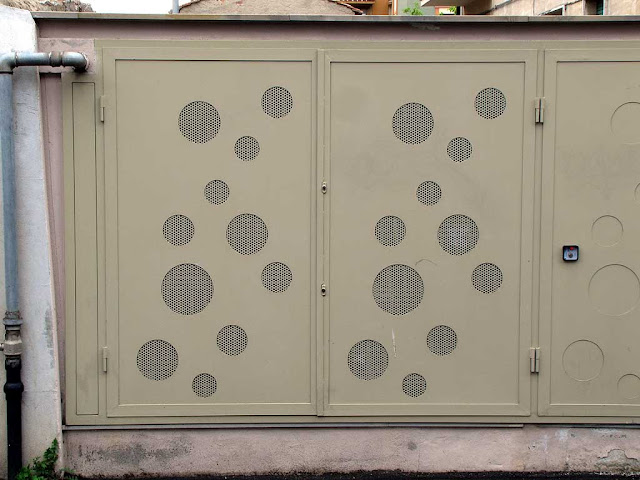 Same street, a curious and repeating pattern of ventilation holes of an utilities cabinet.
Same street, a curious and repeating pattern of ventilation holes of an utilities cabinet. Some really wild urban green seen through the window of an abandoned building in “Via del Fagiano”.
Some really wild urban green seen through the window of an abandoned building in “Via del Fagiano”. Same street, a curious and repeating pattern of ventilation holes of an utilities cabinet.
Same street, a curious and repeating pattern of ventilation holes of an utilities cabinet. All the cruise ships calling at the port of Livorno usually arrive in the early morning and leave in the late afternoon for another night of sailing. Some passengers are watching from their balconies during the departure of the “Liberty of the Seas”.
All the cruise ships calling at the port of Livorno usually arrive in the early morning and leave in the late afternoon for another night of sailing. Some passengers are watching from their balconies during the departure of the “Liberty of the Seas”. The 339-meter ship, which carries 3600 passengers and a crew of 1300, is owned and operated by Royal Caribbean International.
The 339-meter ship, which carries 3600 passengers and a crew of 1300, is owned and operated by Royal Caribbean International.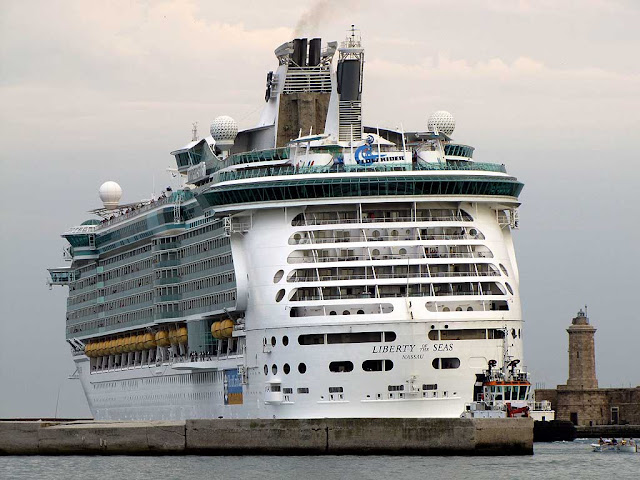 The tug “Francesca Neri” is escorting the “Liberty of the Seas” beyond the entrance of the port.
The tug “Francesca Neri” is escorting the “Liberty of the Seas” beyond the entrance of the port.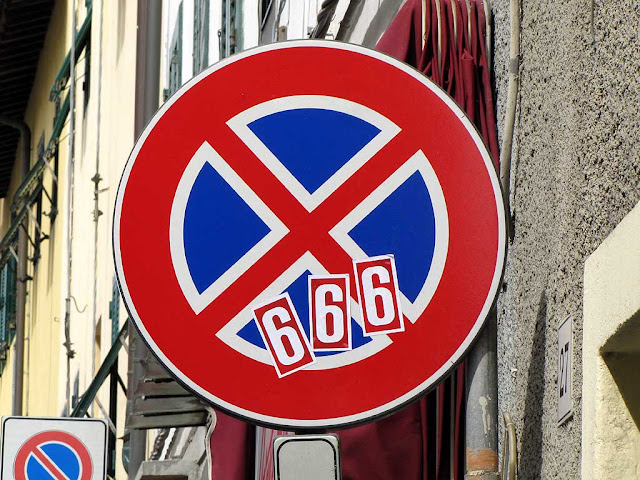 Clearly this is not a Clet Abraham's work, perhaps somebody wrote the Number of the Beast on a traffic sign... with stickers!
Clearly this is not a Clet Abraham's work, perhaps somebody wrote the Number of the Beast on a traffic sign... with stickers! This “No Cops” is less diabolic, but slightly more disturbing.
This “No Cops” is less diabolic, but slightly more disturbing. Another of the new planters in “Piazza Attias”, decorated with a reproduction of “Vapore nel porto” (Steamhip in port) by the Livornese painter Mario Puccini.
Another of the new planters in “Piazza Attias”, decorated with a reproduction of “Vapore nel porto” (Steamhip in port) by the Livornese painter Mario Puccini.
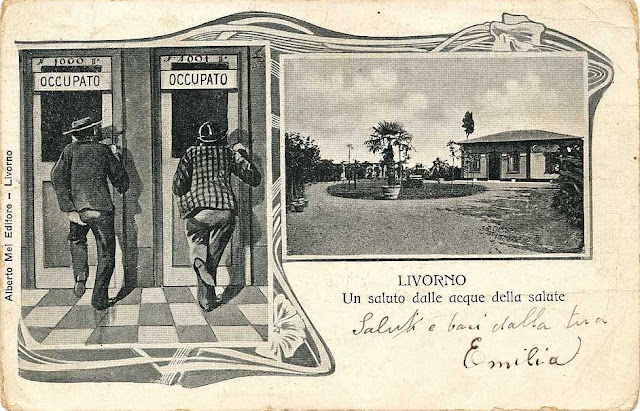 A not-so-subtle way of alluding to the curative powers of the “Acque della Salute” (Waters of Health).
A not-so-subtle way of alluding to the curative powers of the “Acque della Salute” (Waters of Health). A panoramic view of the thermal baths in 1912.
A panoramic view of the thermal baths in 1912. The Municipality of Livorno is proudly announcing that you can get your certificates on line, but the Count of Cavour looks perplexed...
The Municipality of Livorno is proudly announcing that you can get your certificates on line, but the Count of Cavour looks perplexed... Chairs and tables on the sidewalk of “Via Magenta” for the newly opened “La stüa”.
Chairs and tables on the sidewalk of “Via Magenta” for the newly opened “La stüa”. From left to right: a Dreadnought acoustic guitar by Ivano Colombini, a hollow-body electric guitar and a jazz guitar by Furio Sciumbata, a classical guitar by Simone Coloretti and one by Ivano Colombini.
From left to right: a Dreadnought acoustic guitar by Ivano Colombini, a hollow-body electric guitar and a jazz guitar by Furio Sciumbata, a classical guitar by Simone Coloretti and one by Ivano Colombini. Electric bass and guitar by Ivano Colombini.
Electric bass and guitar by Ivano Colombini. The tug boat “Piero Neri” is assisting the 240-meter tanker “Seaborne” during the mooring operations.
The tug boat “Piero Neri” is assisting the 240-meter tanker “Seaborne” during the mooring operations. Three more tugs were taking part in the maneuver: the “Alfredo Neri” and the “Porto Baratti” are both visible on the left. On the right, the “Francesca Neri” is framed by the bow of the cruise ship “Sovereign”.
Three more tugs were taking part in the maneuver: the “Alfredo Neri” and the “Porto Baratti” are both visible on the left. On the right, the “Francesca Neri” is framed by the bow of the cruise ship “Sovereign”.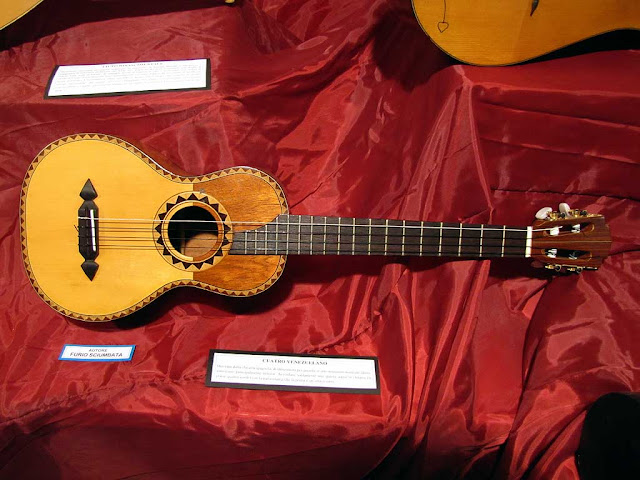

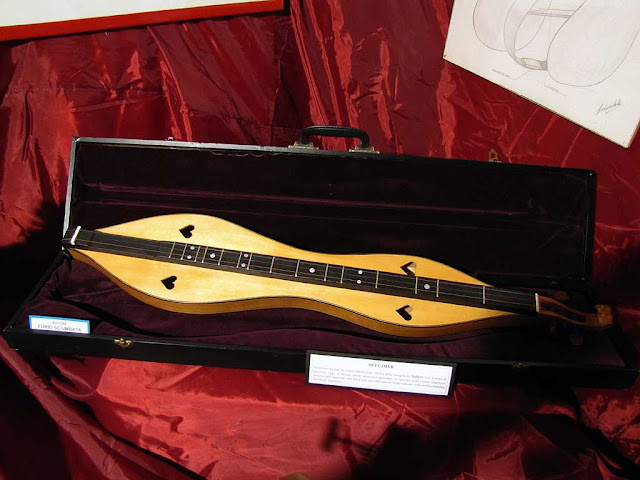
 Looking at the ad on the Segways I was probably a bit too quick in translating “Per Madre Terra” as “For Mother Earth”. In Italian “Terra” with the uppercase initial is the planet and a lowercase “terra” may be both land and soil.
Looking at the ad on the Segways I was probably a bit too quick in translating “Per Madre Terra” as “For Mother Earth”. In Italian “Terra” with the uppercase initial is the planet and a lowercase “terra” may be both land and soil.


 Locked bicycles with a view over a bend of the canal. (“Via della Madonna” / “Scali del Pesce”)
Locked bicycles with a view over a bend of the canal. (“Via della Madonna” / “Scali del Pesce”) A Tazzari Zero electric car parked outside the Tuttovela village.
A Tazzari Zero electric car parked outside the Tuttovela village. A Renault Twizy on display at the Tuttovela village. (Pictures taken last April)
A Renault Twizy on display at the Tuttovela village. (Pictures taken last April)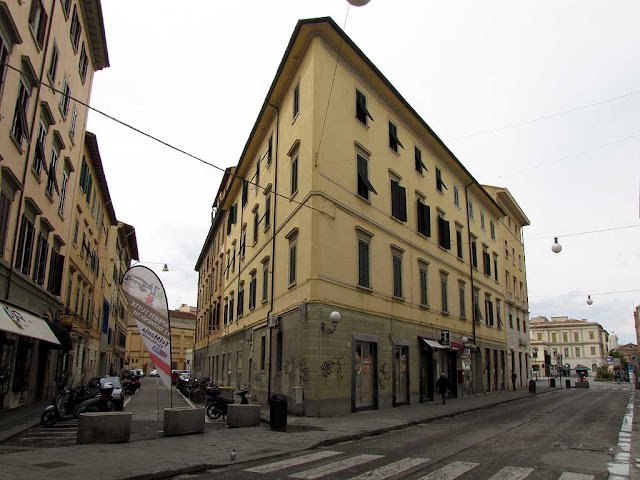 Towards its “Piazza Cavour” end, “Via Ricasoli” is cut by two diagonal streets and this makes for two interesting corner buildings: one on the side of “Via Sardi” ...
Towards its “Piazza Cavour” end, “Via Ricasoli” is cut by two diagonal streets and this makes for two interesting corner buildings: one on the side of “Via Sardi” ... ... and another on the side of “Via delle Bandiere”.
... and another on the side of “Via delle Bandiere”. For a few years, until the destruction of the Cathedral during the WWII air raids, a monumental fountain graced the outside of the apse, in what was the “Largo del Littorio” and now is “Largo Duomo”. It was built in 1929 for the “Istituto Nazionale Immobiliare” on a design by Gino Cipriani and G. Macchia.
For a few years, until the destruction of the Cathedral during the WWII air raids, a monumental fountain graced the outside of the apse, in what was the “Largo del Littorio” and now is “Largo Duomo”. It was built in 1929 for the “Istituto Nazionale Immobiliare” on a design by Gino Cipriani and G. Macchia. Bright red nets and yellow buoys, I guess fishes don't have a really good sight...
Bright red nets and yellow buoys, I guess fishes don't have a really good sight... The word stüa is not Italian but Ladin, a language still spoken in some parts of Northern Italy. It literally means stove, but up North the word was often used for a wood-panelled dining room where the stove was.
The word stüa is not Italian but Ladin, a language still spoken in some parts of Northern Italy. It literally means stove, but up North the word was often used for a wood-panelled dining room where the stove was. On January 19, 1998, 17-years-old Christian Bartoli died for a ruptured aneurysm after two days of intensive care. His parents chose to donate his organs, changing forever the lives of those who received them. In 1999 a small square near the “Tre Ponti” (Three Bridges) beach was named after him.
On January 19, 1998, 17-years-old Christian Bartoli died for a ruptured aneurysm after two days of intensive care. His parents chose to donate his organs, changing forever the lives of those who received them. In 1999 a small square near the “Tre Ponti” (Three Bridges) beach was named after him.


 The bust of the respected politician Giuseppe Emanuele Modigliani and the one of his brother, the world famous painter Amedeo Modigliani, are placed on different sides of the “Villa Fabbricotti” building. For once, we are pleased to reunite them...
The bust of the respected politician Giuseppe Emanuele Modigliani and the one of his brother, the world famous painter Amedeo Modigliani, are placed on different sides of the “Villa Fabbricotti” building. For once, we are pleased to reunite them... The monument dedicated “Ai caduti civili di guerra” (To civilian victims of war) in “Via Fiume”. The stele, by Dino Bovecchi on a design by Vitaliano De Angelis, was erected in 1965 to honor the civilian victims of deportation, forced labor and air raids.
The monument dedicated “Ai caduti civili di guerra” (To civilian victims of war) in “Via Fiume”. The stele, by Dino Bovecchi on a design by Vitaliano De Angelis, was erected in 1965 to honor the civilian victims of deportation, forced labor and air raids. One of the four bronze spheres of the obelisk of “Piazza Mazzini”. As you can easily see from the cracks and the erosion, the main problem with this stele is that it was made of friable sandstone.
One of the four bronze spheres of the obelisk of “Piazza Mazzini”. As you can easily see from the cracks and the erosion, the main problem with this stele is that it was made of friable sandstone. Many ancient obelisks are still around in quite good shape after thousands of years, but they were usually carved from a single block of red granite, a much harder and durable stone.
Many ancient obelisks are still around in quite good shape after thousands of years, but they were usually carved from a single block of red granite, a much harder and durable stone. This could reinforce the speculation that it was built with recycled stones from the other steles.
This could reinforce the speculation that it was built with recycled stones from the other steles. Self-portrait in a brass door knob in “Via Ricasoli”. This must be one of the best polished door handles in town, because it has been already used for a 2010 Theme-Day post.
Self-portrait in a brass door knob in “Via Ricasoli”. This must be one of the best polished door handles in town, because it has been already used for a 2010 Theme-Day post. This chained wheel is all that remains of the second entry of our Bicycle Art gallery.
This chained wheel is all that remains of the second entry of our Bicycle Art gallery.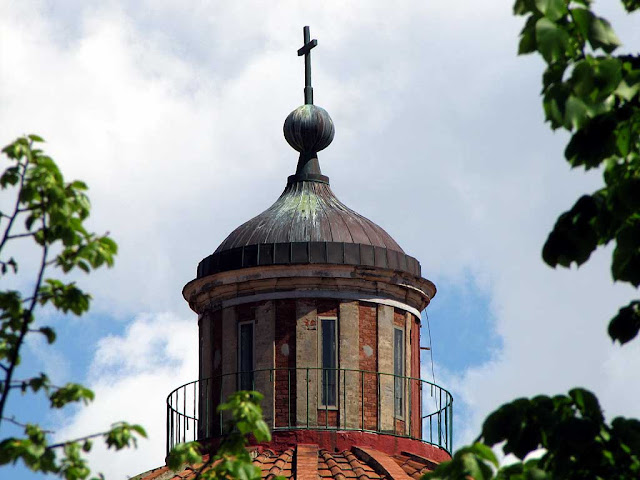 The lantern of the dome of “Santa Maria del Soccorso” in “Piazza della Vittoria”.
The lantern of the dome of “Santa Maria del Soccorso” in “Piazza della Vittoria”. A tugboat like the “Alessandro Neri” may look outsized by huge container ships but it is still quite imposing against a few rowboats.
A tugboat like the “Alessandro Neri” may look outsized by huge container ships but it is still quite imposing against a few rowboats. The models of an ATR 42 MP and two patrol boats of the “Guardia Costiera” (Coast Guard) on display at the Tuttovela village.
The models of an ATR 42 MP and two patrol boats of the “Guardia Costiera” (Coast Guard) on display at the Tuttovela village. A real water scooter of the “Polizia di Stato” (National Police).
A real water scooter of the “Polizia di Stato” (National Police).